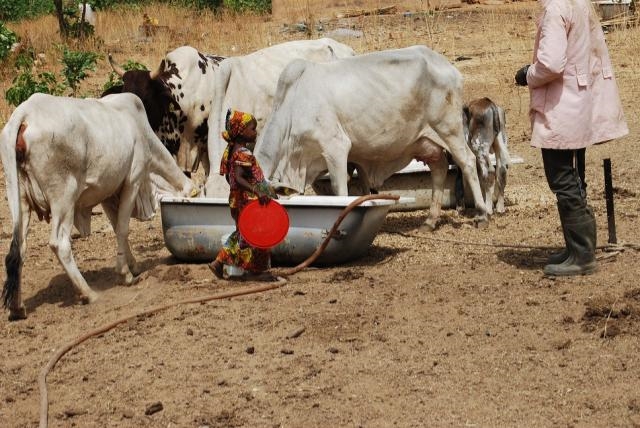
A small girl feeds her parents cows in Kaduna State, where thousands of people displaced by Boko Haram are now shivering through the seasonal Harmattan winds. Photo: Mohammad Ibrahim/IRIN
irinnews.org - BY Mohammad Ibrahim
KADUNA, 5 January 2016 (IRIN) - The temperature is dropping across northern Nigeria as the seasonal Harmattan winds blow in a haze of dust from the Sahara, blotting out the sun for days on end. It’s miserable at the best of times, worse still if you’ve been made homeless by Boko Haram violence and don’t have decent shelter.
“It has not been easy since we came to this camp 11 months ago,” said Mama Aisha, who fled Maiduguri, the main city in the northeast, and now lives 800 kilometres away in north-central Kaduna State. “We don’t have blankets to keep us warm.”
Aisha is just one of hundreds of thousands of internally displaced persons (IDPs) who have set up informal camps throughout the northern region, with little to no protection from the low temperatures.
(READ COMPLETE ARTICLE)
Recent Comments